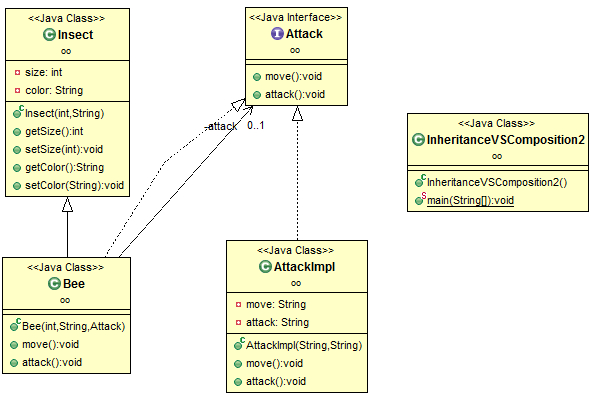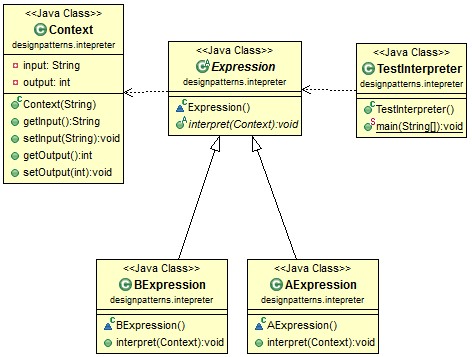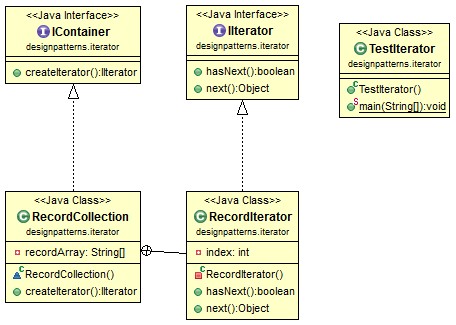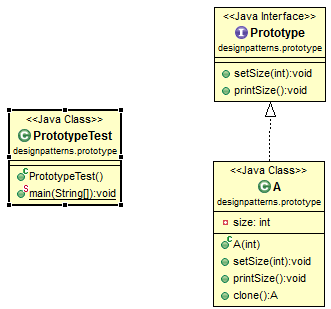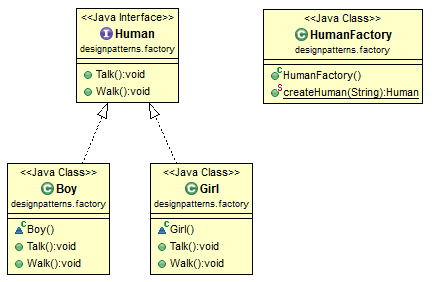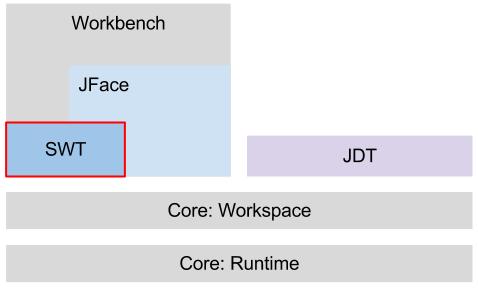This article illustrates the concepts of inheritance vs. composition in Java. It first shows an example of inheritance, and then shows how to improve the inheritance design by using composition. How to choose between them is summarized at the end.
Design Patterns Stories
Java Design Pattern: Interpreter
Major revision in progress … Please come back later. Interpreter pattern is used when some context needs to be interpreted. The following example is a very simple Interpreter implementation. It interpretes letter “a” and “b” to “1” and “2”. Class Diagram Note that: the dependency is also shown in diagram to make the structure more … Read more
Java Design Pattern: Iterator
Iterator pattern is used to iterate through a collection of objects. It is a commonly used pattern, you probably have used it before. Whenever you sees something like hasNext() and next(), it is probably a iterator pattern. For example, you may iterate through a list of database query record. Iterator Pattern Class Diagram Iterator Pattern … Read more
Java Design Pattern: Flyweight
Flyweight pattern is used for minimizing memory usage. What it does is sharing as much data as possible with other similar objects. 1. Flyweight Pattern Class Diagram 2. Flyweight Pattern Java Code // Flyweight object interface interface ICoffee { public void serveCoffee(CoffeeContext context); }// Flyweight object interface interface ICoffee { public void serveCoffee(CoffeeContext context); } … Read more
Java Design Pattern: Prototype
Prototype design pattern is used when very similar objects are frequently created. Prototype pattern clones objects and set the changed feature. In this way, less resources are consumed. 1. Prototype Pattern Class Diagram 2. Prototype Pattern Java Example package designpatterns.prototype; //prototype interface Prototype { void setSize(int x); void printSize(); } // a concrete … Read more
Java Design Pattern: Chain of Responsibility
The main idea of Chain of Responsibility design pattern is to build a chain of processing unit, each unit handle the request if threshold is satisfied. Since a chain is built, if one unit is not satisfied, it’s next unit will be tested, and so on. Each request will be process along the chain. Chain … Read more
Java Design Pattern: Memento
In future, time travel will be invented. Memento is the key to time travel. Basically, what it does is to allow an object to go back to a state. In the following example, You can time travel to any era for your Life, and You can restore to a previous era you have been to. … Read more
Java Design Pattern: Builder
The key feature of Builder pattern is that it involves a step-by-step process to build something, i.e., every produce will follow the same process even though each step is different. In the following example, we can define a drink builder called StarbucksBuilder which will build a Starbucks drink. StarbucksBuilder has several steps to build a … Read more
Java Design Pattern: Mediator
Mediator design pattern is used to collaborate a set of colleagues. Those colleagues do not communicate with each other directly, but through the mediator. In the example below, Colleague A want to talk, and Colleague B wants to fight. When they do some action(i.e., doSomething()), they invoke mediator to do that. Mediator Class Diagram Mediator … Read more
Java Design Pattern: Command
Command design pattern takes an operation and its arguments and wraps them up in an object to be executed, logged, etc. In the example below, Command is an operation, its argument is a Computer, and they are wrapped in Switch. In another perspective, Command pattern has 4 parts: command, receiver, invoker and client. In this … Read more
Java Design Pattern: Facade
Facade design pattern hides complexity of a task and provides a simple interface. The startup of a computer is a good example. When a computer starts up, it involves the work of cpu, memory, hard drive, etc. To make it easy to use for users, we can add a facade which wrap the complexity of … Read more
Java Design Pattern: Composite
Composite pattern is relatively simple, but it has been used in many designs, such as SWT, eclipse workspace, etc. It basically produce a hierarchical tree which can be accessed by using a uniform method. Class Diagram The following code implements the following tree structure. Java Code import java.util.List; import java.util.ArrayList; //Component interface Component { … Read more
Java Design Pattern: Abstract Factory
Abstract Factory pattern adds another layer of abstraction for Factory pattern. If we compare Abstract Factory with Factory, it is pretty obvious that a new layer of abstraction is added. Abstract Factory is a super-factory which creates other factories. We can call it “Factory of factories”. Abstract Factory class diagram Abstract Factory Java code interface … Read more
Java Design Pattern: Factory
1. The story for Factory pattern Factory design pattern is used for creating an object based on different parameters. The example below is about creating human in a factory. If we ask the factory for a boy, the factory will produce a boy; if we ask for a girl, the factory will produce a girl. … Read more
Eclipse Design Patterns – Strategy in SWT
Design patterns used in SWT is relatively straightforward. SWT is an independent module in Eclipse platform. In brief, Strategy let client dynamically set the strategy it should use. Strategy is different from State. First of all, Strategy is simpler since it is only about using interface instead of concrete class. Secondly, State involves changing the … Read more
